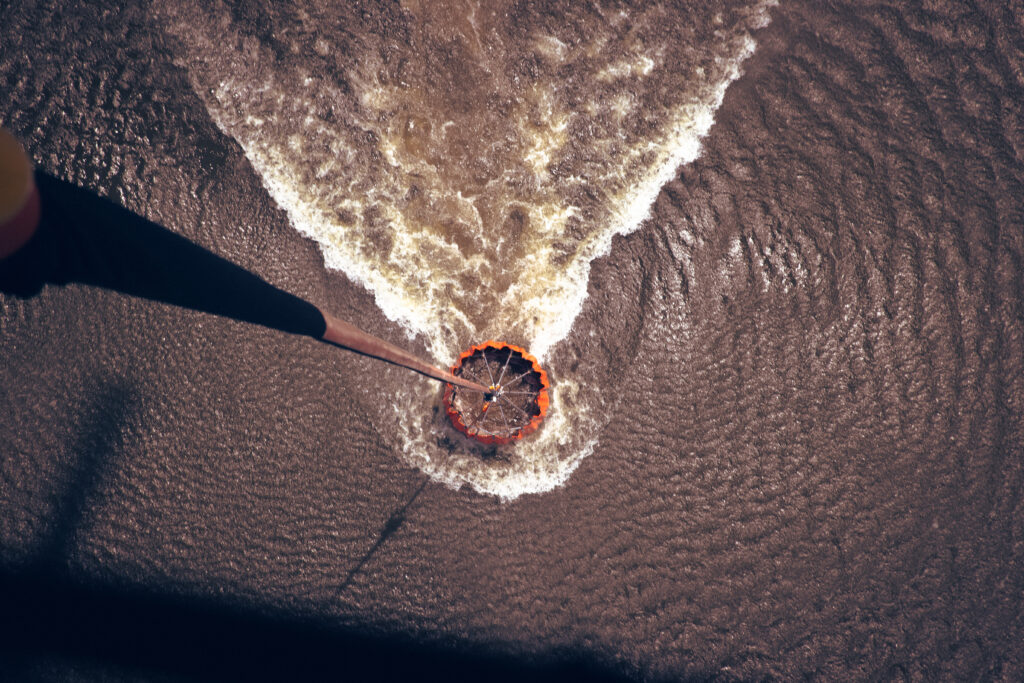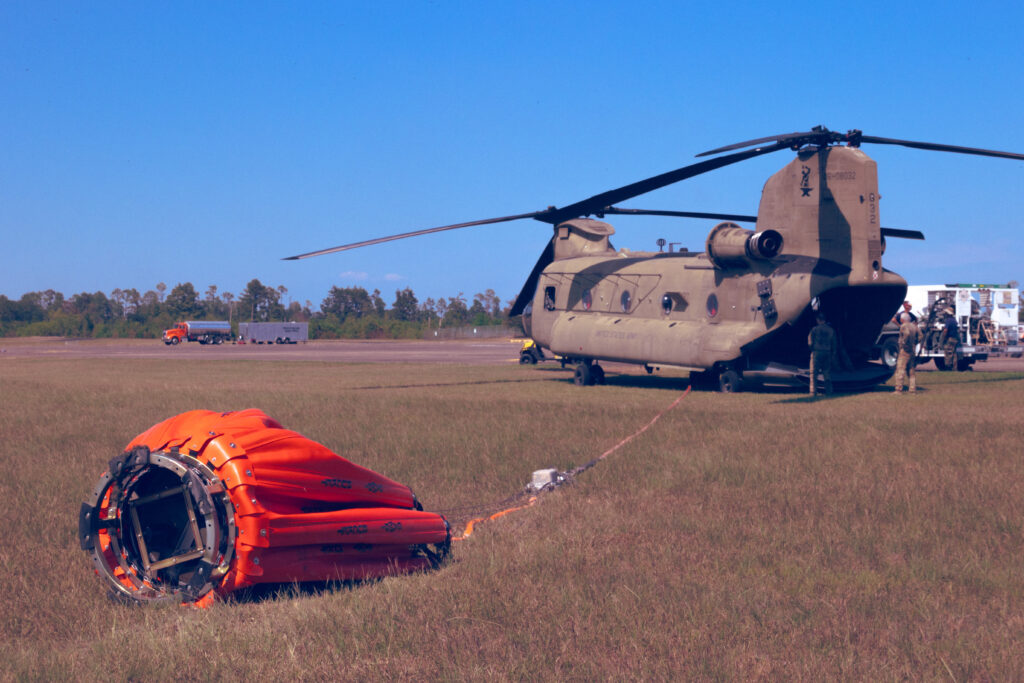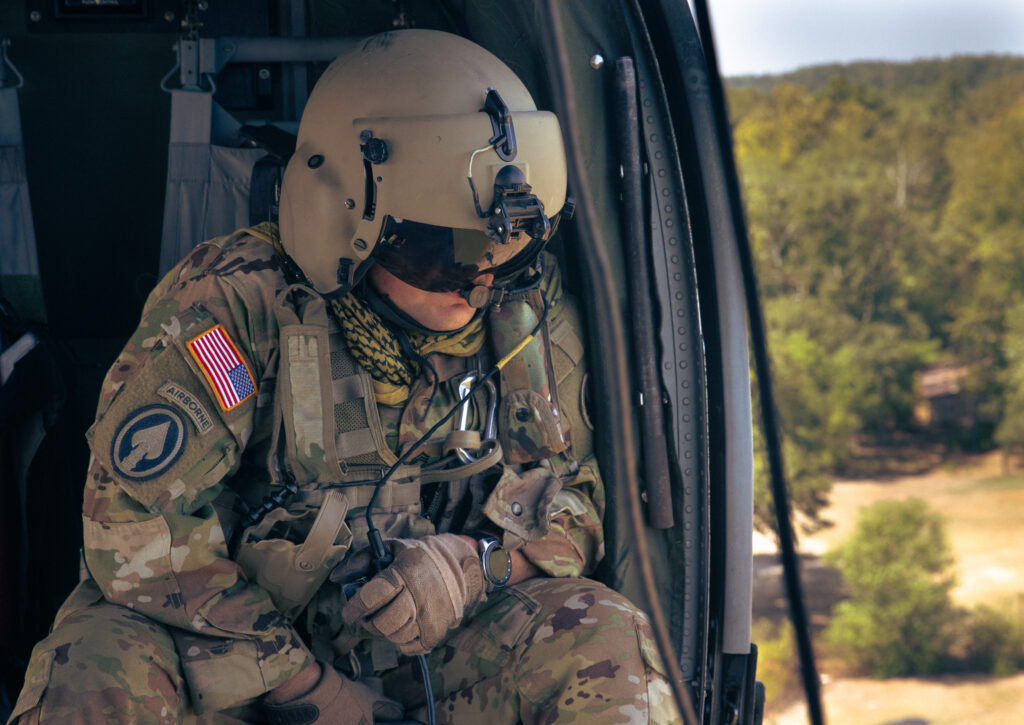Story by Spc. Carlos Parra
The skies above the Beauregard Parish of Louisiana were laced with heavy smoke as an immense battle with a devastating force of nature ensued below. The Tiger Island Fire, which would eventually become the largest wildfire in Louisiana history, was one of four major wildfires that raged across the state.
It threatened the lives and homes of many displaced residents, left a staggering 15,000 acres of land charred and dismayed, and forced 17 parishes to declare a state of emergency. Louisiana National Guard (LANG) aviation and engineering assets were activated on August 23, 2023, to assist their civilian counterparts with suppression and containment. Still, pressure mounted, and once the blaze rapidly doubled in size, it was time to call reinforcements.

On Monday, August 28, 2023, Alabama Governor Kay Ivey announced that she was deploying three Alabama National Guard aviation assets to assist the state of Louisiana. By morning, two Blackhawks aircrews from the 1-131st Aviation Regiment in Hope Hull, and one Chinook aircrew from the 1-169th Aviation Regiment in Birmingham were en route to assist and suppress the infernos that engulfed the landscape and posed an imminent danger to communities.
“Man, I hope I get to go on this mission,” said Chief Warrant Officer 3 Jim Irby, a seasoned Blackhawk pilot with the 1-131st Aviation Regiment, as he recalled his first thoughts upon hearing about the activation of the Alabama National Guard.

After receiving the call, Irby met with his wife and received a heartfelt response.
“She said, ‘This is the kind of mission you love to do. You need to go do this.”
Sgt. Stephen Perdue, a fiery young crew chief with the 1-131st Regiment, was eager to contribute his efforts to the cause and gain some vital experience from the first fire mission of his career.
“All the training up to this point in my career, we just put it to work,” said Perdue.
The training included weekly flights with his crew, conducting sling load operations, and water bucket training to gain proficiency in their craft and build camaraderie and a professional environment in the aircraft.

“We can’t be against each other,” said Perdue. “It takes a whole aircrew to mesh together as a well-oiled machine to proficiently fly that Blackhawk.” Once on-site, all three aircrews seamlessly fell into rotation with other aircraft from Oklahoma, Tennessee, Arkansas, and New Jersey, who were all called into action. Each aircraft began raining down thousands of gallons of water onto the blaze below. With a bambi bucket attached, each aircraft would meticulously draw water from lakes, rivers, and reservoirs nearby.
Once the buckets reached their respective limits—660 gallons for the Blackhawk and 2,000 gallons for the Chinook—the aircraft made their way to a designated site. Pilots tactfully maneuvered through the air with pristine precision as two tons of water swayed beneath them.
“It’s really intense flying,” said Irby, “We’re spending the entire day picking up extremely heavy loads and pushing our aircraft to the maximum.” Timing is the key to accuracy, and as an aircrew approached a hot spot, a steady torrent of water would fall from the bucket as the aircrew flew over their intended target, quelling the wildfire’s relentless advance.
In-flight communication between pilots and crew chiefs is vital, not just for mission success, but for their safety.
“[Pilots] can’t see that bucket, so we paint that picture for them so they know what’s going on and what inputs on the controls to make up front,” said Perdue, “ As long as we work together, it goes smooth every time.”
Every aircrew worked tirelessly around the clock to disperse a combined 1.1 million gallons of water on the wildfires. “It’s really rewarding to be in the National Guard, helping a sister state, and helping the people in the community,” said Irby, “It’s what we train to do, to come out and make an actual impact in our local communities.”
The love and support were mutual, and the appreciation from the local communities did not go unnoticed. “The people of Louisiana are so grateful and so appreciative,” Perdue said. “It feels really good. It’s what I signed up to do.”
The collaborative spirit between Louisiana, Alabama, and the other participating National Guard aviators shone brightly amidst adversity. “We are fortunate to have so many selfless professionals eager to respond to a rare type of emergency in Louisiana,” said Lt. Col. Walt Deville, the facility commander of Army Aviation Support Facility #2 in Pineville, Louisiana. “With the limited number of assets we have, it is important to depend on neighboring states to help augment our resources.”
Today, only sunshine and clouds fill the skies of Beauregard Parish, thanks to the heroic efforts of National Guard service members. Their selfless service and commitment to safeguarding communities transcended state borders, embodying the essence of the National Guard’s mission—to protect and serve the nation in times of need.


